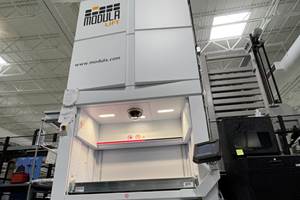Frequently Asked Questions Regarding Lean Manufacturing
For as long as lean manufacturing concepts have been around, there are some who still do not understand what lean is and why it’s an important part of a continuous-improvement strategy.
Having spent many years training and consulting on lean concepts, I have responded to many questions. Here are some of the most frequently asked ones:
What is lean manufacturing?
In simple terms, lean manufacturing is a process that operates effectively through the elimination or reduction of waste. There are proven tools to address waste, such as the 5S system to improve workplace organization, quick change-over to reduce machine setup times, total productive maintenance to reduce equipment downtime, one-piece flow to keep things moving until finished, standard work to discover the best way to do a job and ensure everyone follows the same protocol, and more.
What is waste?
Waste is any activity that does not add value from a customer’s perspective. Another way to think about waste is that it is something a customer does not want to pay for. Over the years, eight specific types of waste have been identified. An easy way to remember them is through the acronym DOWNTIME:
-
- Defects include anything that was done wrong and needs to be fixed.
- Overproduction happens when a manufacturer makes more than is needed or makes something too fast or soon.
- Waiting happens when something goes wrong or doesn’t go as planned in a prior process, creating idle time. It generally refers to processes or products rather than people who can usually find something to keep them busy rather than stand idle.
- Non-value-added processing is taking more action than necessary to meet a customer’s needs when making a product or offering a service.
- Transportation is excess movement of products through the process. If the shortest distance between two points (or processes) is a straight line, a more circuitous path is considered to be excessive.
- Inventory is needed to make any process functional, yet anything more than is required to satisfy immediate needs can be considered excessive.
- Motion is a waste when people look for things, rearrange items and reach for/lift things frequently during any process.
- Employee under-utilization includes not applying employee skills, knowledge and experience to their fullest potential. It can breed frustration or complacency.
How do you get rid of waste in a process?
Getting rid of process waste starts with recognizing the waste and taking steps to address it. There are a few ways to recognize waste. One is a “waste walk” during which a team walks through an entire process the way a product might, looking for the eight wastes described above. The wastes should be recorded when found and discussed amongst the team. Another way to identify waste is value-stream mapping, a tool that depicts all the steps used to produce a product or deliver a service. Waste can be represented as the number of days an inventory sits at each step. This inventory can include parts, orders, deliveries, responses to customers and more. The number of days is calculated by dividing the inventory by the daily demand for that step in the process. So, if 10 widgets are available for a specific process step, and the average daily demand for widgets at that step is two, we have five days of demand. The more days of demand, the greater the amount of waste at that step. Elapsed time, or the time something typically waits at a process before moving to the next process, is another way to represent waste. The longer the elapsed time, the greater the waste inherent to that process.
When are we “lean enough?”
If we believe in continuous improvement, we know we are never really finished. Lean, like continuous improvement, is a journey in which many small but sustaining gains are made. If we can say that what we are doing today is better than yesterday, we are on the right path.
Related Content
What Are the Limits to Make-to-Order Manufacturing?
Automated storage and retrieval system maker Modula produces a product with 2,000 parts and hundreds of variations that has to be completed within a customer’s site. Here is a picture of what is possible in making a product tailored to the customer.
Read More10 Lean Manufacturing Ideas for Machine Shops
In addition to the right mix of traditional strategies, a lean manufacturing toolkit can make high-mix, low-volume machining faster, more predictable and less expensive.
Read MoreRead Next
Revisiting the Value Stream
Mapping all activities required to produce goods and services, not just some, will reveal more opportunities for continuous improvement.
Read More3 Mistakes That Cause CNC Programs to Fail
Despite enhancements to manufacturing technology, there are still issues today that can cause programs to fail. These failures can cause lost time, scrapped parts, damaged machines and even injured operators.
Read MoreObscure CNC Features That Can Help (or Hurt) You
You cannot begin to take advantage of an available feature if you do not know it exists. Conversely, you will not know how to avoid CNC features that may be detrimental to your process.
Read More














.png;maxWidth=300;quality=90)








